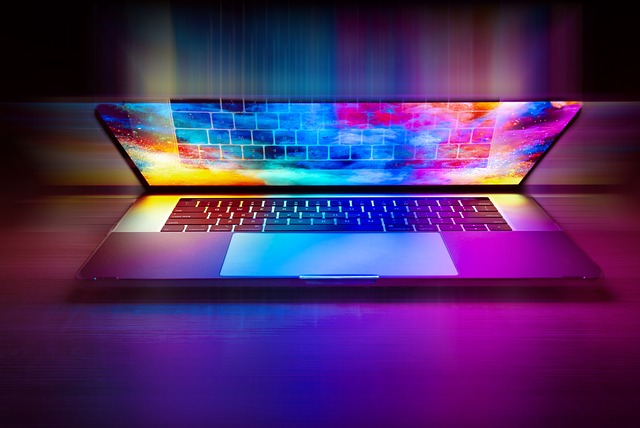The Ultimate Guide to Optimizing Your PC for Gaming

Gaming on a PC offers unparalleled flexibility, customization, and performance. However, achieving the best possible experience requires more than just owning a powerful machine. To truly unlock your PC’s potential, you need to optimize both hardware and software settings. In this comprehensive guide, we’ll walk you through every step of the process—from upgrading your hardware to fine-tuning your system for maximum gaming performance.
1. Assess Your Current Hardware
Before making any changes, it’s crucial to evaluate your existing setup. Knowing where your PC stands will help you identify bottlenecks and prioritize upgrades.
A. Check System Specifications
- CPU (Processor) : Ensure your processor is capable of handling modern games. For competitive gaming, aim for at least an Intel Core i5 or AMD Ryzen 5.
- GPU (Graphics Card) : This is the most critical component for gaming. High-end GPUs like NVIDIA RTX 30-series or AMD Radeon RX 6000-series deliver excellent performance.
- RAM : Most games require at least 8GB of RAM, but 16GB is recommended for smoother multitasking and future-proofing.
- Storage : SSDs (Solid State Drives) are faster than HDDs (Hard Disk Drives) and significantly reduce load times.
- Power Supply Unit (PSU) : Make sure your PSU provides enough wattage to support all components, especially if you have a high-end GPU.
B. Use Benchmarking Tools
Tools like 3DMark , UserBenchmark , or Heaven Benchmark can assess your PC’s performance and highlight areas that need improvement.
2. Upgrade Key Components
If your current hardware isn’t cutting it, consider upgrading these critical components:
A. Graphics Card (GPU)
The GPU is the heart of your gaming rig. Upgrading to a newer model can drastically improve frame rates and visual fidelity. Look for cards with ray tracing capabilities if you want realistic lighting effects.
B. Memory (RAM)
Adding more RAM ensures smoother gameplay, especially when running background applications alongside games. Aim for 16GB or higher for optimal performance.
C. Storage Drive
Switching from an HDD to an NVMe SSD can dramatically reduce game loading times and improve overall responsiveness. Consider dedicating an SSD specifically for your operating system and frequently played games.
D. Cooling System
Overheating can throttle performance. Invest in better cooling solutions such as aftermarket CPU coolers, additional case fans, or even liquid cooling systems.
3. Optimize Software Settings
Even with top-tier hardware, poor software configurations can hinder performance. Follow these steps to maximize efficiency:
A. Update Drivers
Outdated drivers can cause compatibility issues and subpar performance. Regularly update:
- Graphics Drivers : Download the latest versions from NVIDIA GeForce Experience or AMD Adrenalin Software.
- Chipset Drivers : These ensure proper communication between your motherboard and other components.
B. Adjust In-Game Settings
Tweak graphical settings within games to balance performance and visuals:
- Lower resolution or disable resource-heavy features like anti-aliasing and shadows.
- Enable V-Sync only if you experience screen tearing; otherwise, use G-Sync (NVIDIA) or FreeSync (AMD).
C. Install Performance-Boosting Software
- Razer Cortex : Cleans up unnecessary processes and optimizes your PC for gaming.
- MSI Afterburner : Allows you to overclock your GPU safely and monitor temperatures and usage stats.
- Game Booster : Temporarily disables non-essential services to free up resources.
4. Optimize Windows for Gaming
Windows has several built-in features that can enhance gaming performance:
A. Enable Game Mode
Go to Settings > Gaming > Game Mode and toggle it on. This prioritizes system resources for gaming applications.
B. Disable Background Apps
Unnecessary apps running in the background consume valuable CPU and memory. Go to Settings > Apps > Background Apps and turn off unwanted programs.
C. Adjust Power Settings
Set your power plan to High Performance under Control Panel > Power Options . This prevents throttling during intense gaming sessions.
D. Defragment HDDs or Optimize SSDs
For HDD users, defragmentation improves read/write speeds. For SSDs, use the “Optimize” feature to maintain longevity and performance.
5. Improve Network Performance
Online gaming demands a stable internet connection. Here’s how to minimize latency and lag:
A. Use a Wired Connection
Wi-Fi is convenient but prone to interference. Connect your PC directly to the router via Ethernet for a more reliable connection.
B. Prioritize Gaming Traffic
Enable Quality of Service (QoS) settings on your router to prioritize gaming data packets over other traffic.
C. Close Bandwidth-Hogging Applications
Streaming platforms like Netflix or large downloads can slow down your connection. Pause them while gaming.
D. Consider a Gaming Router
Invest in routers designed for gaming, such as ASUS ROG Rapture or Netgear Nighthawk, which offer advanced features like MU-MIMO and low ping optimization.
6. Maintain Your PC Regularly
A well-maintained PC performs better and lasts longer. Incorporate these practices into your routine:
A. Clean Dust Buildup
Dust clogs airflow and causes overheating. Open your case every few months and clean it using compressed air.
B. Reapply Thermal Paste
Over time, thermal paste loses its effectiveness. Reapplying it can lower CPU/GPU temperatures and boost performance.
C. Uninstall Unused Programs
Unused software takes up space and may run background processes. Use tools like CCleaner to remove bloatware.
D. Backup Important Data
Regular backups protect against data loss due to crashes or malware. Use external drives or cloud storage services like Google Drive or OneDrive.
7. Explore Advanced Techniques
For enthusiasts looking to push their rigs further, here are some advanced tips:
A. Overclocking
Overclocking increases the clock speed of your CPU or GPU, resulting in better performance. Be cautious and follow guides specific to your hardware.
B. Undervolting
Reduce voltage supplied to your CPU/GPU to lower heat output without sacrificing much performance. This extends component lifespan.
C. Custom BIOS Tweaks
Advanced users can tweak BIOS settings to optimize boot times, enable XMP profiles for RAM, and adjust fan curves.




